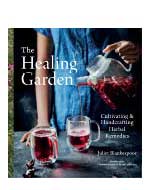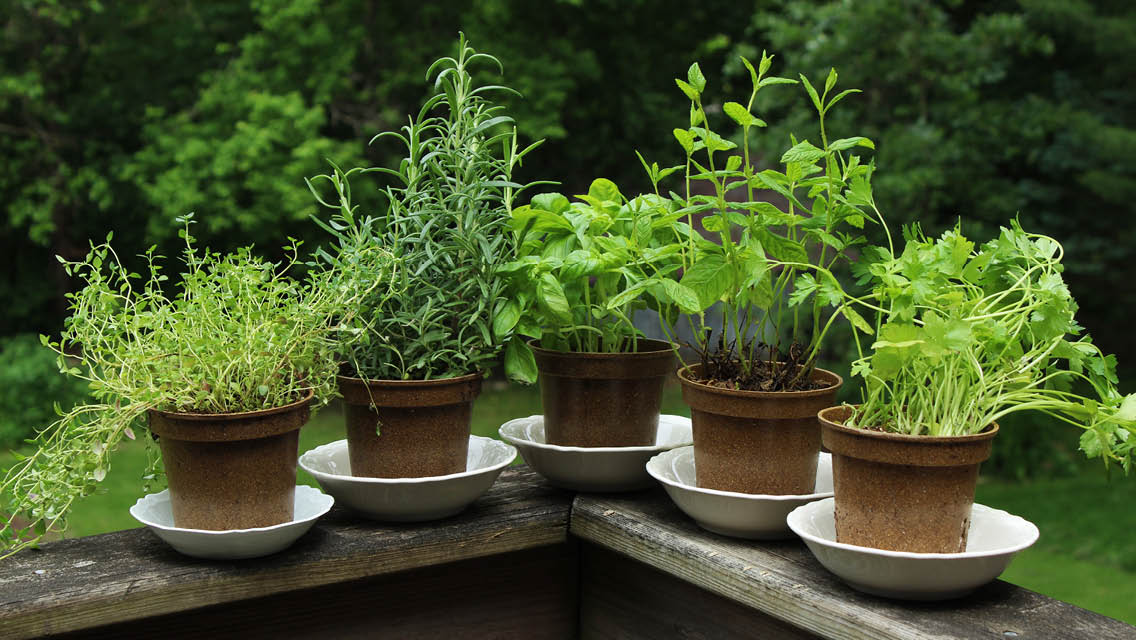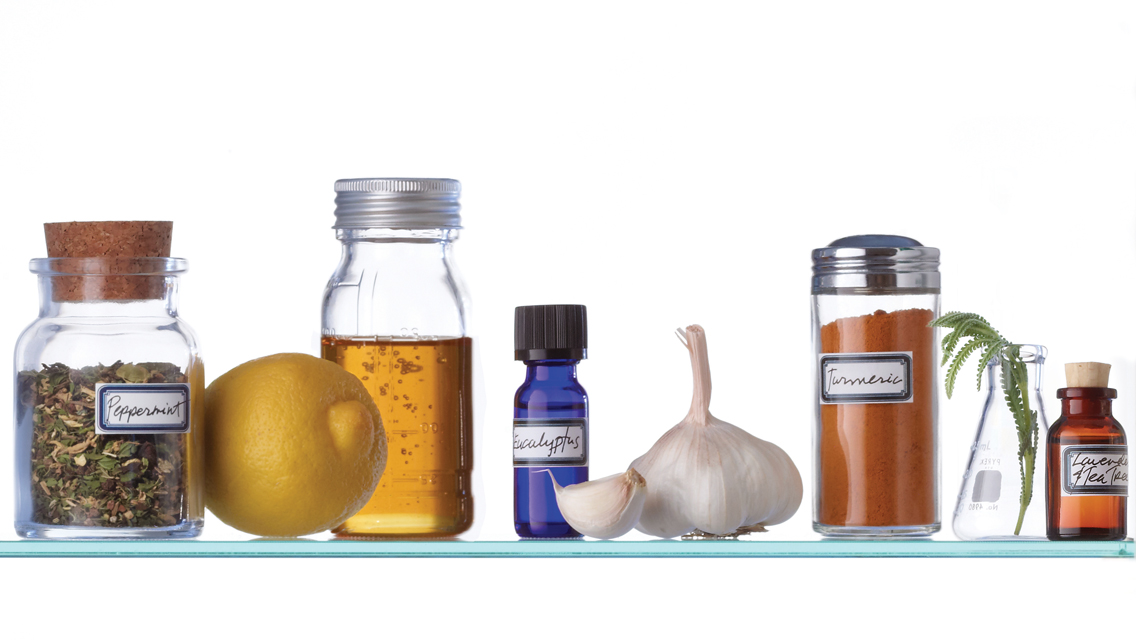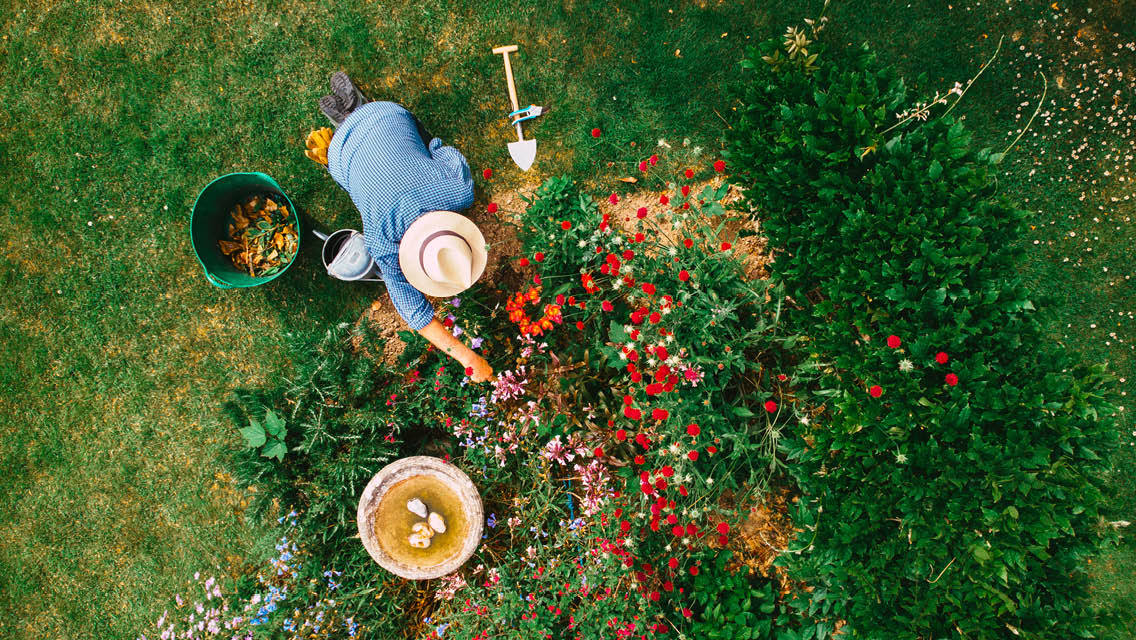We often think of basil, mint, and other common garden herbs as ingredients for home-cooked meals. But they also are useful ingredients in herbal medicine. In her book, The Healing Garden: Cultivating and Handcrafting Herbal Remedies, Juliet Blankespoor shares tips on growing, harvesting, and crafting herbal remedies at home.
Blankespoor has had a long career in herbalism. After studying botanical medicine and running an herbal nursery and medicinal practice, she founded the Chestnut School of Herbal Medicine in 2007, which focuses on holistic herbalism and social justice.
The Healing Garden is a detailed resource for anyone interested in herbalism and gardening, and it aims to inspire herbalists of all levels, whether they have never gardened before or already have a green thumb. Blankespoor explains how to start an herbal garden and cultivate plants to harvest, how to process, dry, and preserve botanicals, and how to make use of these botanicals as food and herbal medicine — whether pesto and vinegar or cough syrups and salves.
We spoke with Blankespoor about The Healing Garden.
Q&A With Juliet Blankespoor
Experience Life | If someone is new to growing herbs for herbal remedies, where would you recommend starting?
Juliet Blankespoor | I’m always excited for folks who are starting an herb garden for the first time — there’s such a sublime array of aromas, flavors, and medicines to choose from. No two herb gardens are alike, and the  possibilities for beauty and healing are endless. I like to set people up for success, so for new-to-the-medicine-patch gardeners, I’ll offer some sage advice: Start small with a few special herbs that are easy to grow. If you’re curious where to meet these herbal sweethearts, I’ve listed my most beloved suggestions in the Top 20 Garden Herbs section of The Healing Garden.
possibilities for beauty and healing are endless. I like to set people up for success, so for new-to-the-medicine-patch gardeners, I’ll offer some sage advice: Start small with a few special herbs that are easy to grow. If you’re curious where to meet these herbal sweethearts, I’ve listed my most beloved suggestions in the Top 20 Garden Herbs section of The Healing Garden.
All of the herbs on this list are hardy and exuberant plants that can be cultivated with ease. They also represent a diverse spectrum of medicine — from stress-relieving herbs like passionflower and ashwagandha to premier immune-boosting botanicals like Spilanthes and bee balm to the most delicious tea herbs you could possibly pour into your cup — anise hyssop, tulsi, and meadowsweet. To help you choose herbs that will thrive where you live, I’ve included siting charts and cultivation profiles for each and every plant. Plus, you’ll find my personal tips for starting your garden beds (or pots) from scratch. Just like we humans thrive on TLC and good nutrition, so do plants.
EL | How much space might I need to start an herbal garden? And can I do it in containers as well?
JB | The size of your garden isn’t as much of a limit as you might imagine. Of course, it does impact what and how much you can grow, but it needn’t stop anyone from herb gardening. If you only have a patio or balcony or tend a small outdoor space, there are plenty of ways to reap rich herbal harvests. One of my favorite strategies is to grow plants that clamber and climb; they make the most of vertical space when horizontal ground is at a premium. Passionflower, hops, climbing roses, and raspberry canes can all be trained to grow upward along walls, fences, and trellises.
I also recommend planting just a few herbs that pack a really big punch by producing a lot of medicine in a small amount of space. For instance, try growing plants that can be harvested many times throughout the year like lemon balm, tulsi, rosemary, anise hyssop, Spilanthes, and bee balm. Give these plants a “haircut” early enough in the season, and they’ll grow right back. Growing these cut-and-come-again herbs can effectively double or triple your yield for every square foot of precious dirt.
Growing herbs in pots or other containers is another brilliant solution for those who are spatially challenged. In fact, many herbs downright thrive in potted environments. I have lots of outdoor garden space, yet I still plant dozens of herbs in containers every year. Not only do they bring beauty to my porch and patio, but they keep medicine right within nibbling reach. Some of my favorite herbs to grow in pots include lemon verbena, gotu kola, white sage, calamus, lemongrass, ginger, turmeric, and aloe vera. I talk extensively about small-size (and big-space!) gardening in The Healing Garden.
EL | For people with limited access to outdoor spaces are there any herbs that are easy to grow indoors?
JB | Most people will be amazed at what they can grow on a sunny windowsill or balcony. Container gardening is highly underutilized, in my opinion, and it offers an incredible opportunity for growing beautiful, productive medicinal and culinary herbs indoors. Two of my favorite herbal houseplants are jiaogulan and gotu kola. If you’ve never heard of these luxuriant beauties, you’ll be excited to make their acquaintance.
Jiaogulan, with its lush growth, is easily one of my favorite indoor herbs of all time. Given the right conditions (moist soil and dappled shade), it becomes a rambunctious trailing vine that grows beautifully as a potted plant or in a hanging basket. Medicinally, it is an exceptional tonic for longevity and vitality. The leaves are brewed into a tea that can be taken for anxiety, stress, depression, high blood pressure, and high cholesterol.
Gotu kola is another luscious herbal houseplant, and I enjoy its presence in my office, where it keeps me company as I write about medicinal herbs. The leaves are a rejuvenating tonic for memory loss, stress, difficulty concentrating, and foggy thinking — hence its location near my desk! The key to growing this verdant herb is to provide moist soils with good drainage. Try planting it in a shallow, broad pot with a saucer underneath to help it retain moisture.
EL | Are there herbs people might already have in their gardens or kitchens without knowing about their potential uses?
JB | One of the biggest perks of my job is the green reveal: helping folks discover that medicine literally surrounds them — in their spice cabinets, backyards, and gardens. It’s like an herbal surprise party that never ends! Much of this astonishing medicine has been employed as food and spice for millennia; all of our classic culinary herbs possess an array of medicinal uses. That’s right — basil, rosemary, thyme, fennel, cardamom, cinnamon, turmeric, garlic, mint, lemongrass, and sage all boast profound healing qualities. Many of these kitchen staples are antimicrobial — they protect you from food-borne pathogens and parasites, and, before the age of refrigeration, enhanced food preservation. Likewise, most are anti-inflammatory; they support your heart, nervous system, and whole-body health. And plenty are carminative, which means they nurture easeful digestion and reduce intestinal gas. This is just the tip of the iceberg — each one of these herbs has a variety of herbal uses.
In the backyard and garden, you’ll likely (fingers crossed!) find a richly nutritious cast of herbal characters including dandelion, chickweed, plantain, violet, and lamb’s quarters. Beyond their supremely nourishing qualities, many of these “weeds” are cleansing and detoxifying; they support kidney, liver, skin, endocrine, and reproductive health. If you’re lucky enough to find them growing nearby (in clean, unsprayed places), I recommend eating and drinking as many as you possibly can. These backyard medicines are among my favorite and most relied-upon herbs of all time, and I’ve included detailed profiles for many of them in The Healing Garden.
EL | In the age of COVID, when many of us are especially concerned about respiratory infections, what herbs would you recommend people have in their cabinet? Echinacea or elderberry, for instance, as used in your cough-syrup recipe?
JB | So many people have become interested in herbal medicine since the beginning of the COVID pandemic, and yes, there are many, many ways that herbs can support us. I always have echinacea and elderberry on hand, and the COVID era is no exception. Echinacea is one of our most trusted immune stimulants for combatting infections, and elderberry is a cornucopia of medicine — it is antiviral, immune stimulating, and rich in vitamin C. I also rely heavily on elecampane, whose aromatic roots are legendary for breaking up and clearing thick phlegm in the lungs (you’ll find it in the syrup recipe for productive coughs alongside echinacea and elderberry in The Healing Garden).
I also keep my herbal pantry stocked with garlic and ginger, which are both easy to find at the store or grow at home. Garlic has an affinity for the lungs and is powerfully antimicrobial, which makes it adept at dealing with viral infections like COVID. It can be taken daily with food as a tonic herb for the immune system, or in larger doses as an acute remedy if an infection sets in. Ginger is also antimicrobial and immune stimulating . . . so I frequently add it to teas and tincture formulas.
You can find Juliet Blankespoor at the Chestnut School of Herbal Medicine and learn more about The Healing Garden book here.





This Post Has 0 Comments